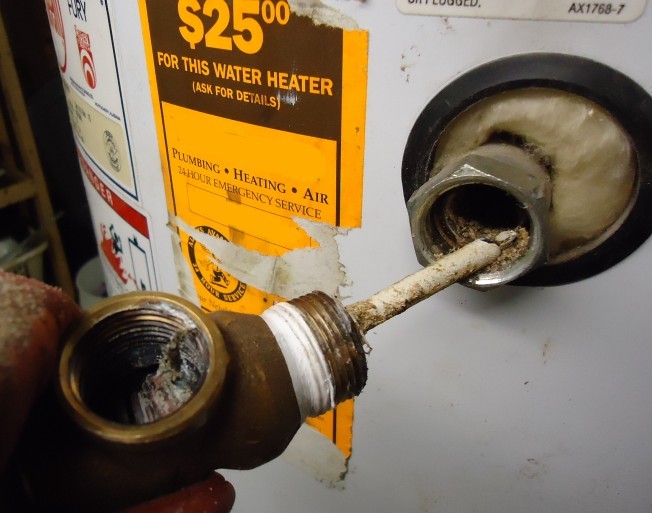Expert Tips on Maintaining Your Home's Hot Water SystemEasy Ways to Maintain Your Home's Hot Water System Properly
Expert Tips on Maintaining Your Home's Hot Water SystemEasy Ways to Maintain Your Home's Hot Water System Properly
Blog Article
What're your opinions concerning Tips For Maintaining Your Hot Water Heater?

Hot water is necessary for everyday comfort, whether it's for a revitalizing shower or cleaning recipes. To guarantee your hot water system runs efficiently and lasts longer, routine upkeep is crucial. This post gives practical tips and understandings on just how to maintain your home's hot water system to avoid interruptions and expensive repair services.
Intro
Keeping your home's warm water system could appear daunting, yet with a couple of straightforward steps, you can ensure it operates smoothly for several years to come. This guide covers everything from understanding your hot water system to do it yourself upkeep pointers and recognizing when to call specialist aid.
Relevance of Keeping Your Warm Water System
Normal upkeep not just prolongs the life expectancy of your warm water system however likewise ensures it operates successfully. Disregarding maintenance can lead to lowered effectiveness, higher power expenses, and even early failing of the system.
Signs Your Warm Water System Demands Maintenance
Knowing when your warm water system needs focus can stop major concerns. Look out for indicators such as inconsistent water temperature level, strange sounds from the heating system, or rustic water.
Comprehending Your Hot Water System
Prior to diving right into maintenance jobs, it's valuable to understand the fundamental components of your warm water system. Usually, this includes the hot water heater itself, pipes, anode poles, and temperature controls.
Month-to-month Maintenance Tasks
Normal regular monthly checks can aid catch small problems before they intensify.
Flushing the Hot Water Heater
Flushing your hot water heater removes debris build-up, improving effectiveness and extending its life.
Monitoring and Changing Anode Rods
Anode rods stop deterioration inside the tank. Examining and replacing them when broken is crucial.
Checking and Readjusting Temperature Setups
Adjusting the temperature level settings guarantees ideal efficiency and safety and security.
DIY Tips for Maintenance
You can do numerous upkeep tasks yourself to maintain your hot water system in leading problem.
Checking for Leaks
Regularly inspect pipes and links for leaks, as these can result in water damages and greater bills.
Checking Stress Relief Valves
Evaluating the stress safety valve guarantees it operates correctly and prevents excessive pressure accumulation.
Protecting Pipelines
Protecting warm water pipes decreases warm loss and can conserve energy.
When to Call a Professional
While DIY maintenance is helpful, some concerns require expert know-how.
Complex Issues Needing Expert Assistance
Instances consist of significant leaks, electrical problems, or if your water heater is constantly underperforming.
Routine Expert Upkeep Perks
Specialist upkeep can consist of thorough evaluations, tune-ups, and guaranteeing compliance with security requirements.
Verdict
Normal upkeep of your home's warm water system is crucial for performance, long life, and price financial savings. By adhering to these ideas and recognizing when to look for specialist help, you can guarantee a dependable supply of hot water without unexpected disruptions.
Water Heater Maintenance Tips
Test the TPR Valve
Shut off the power and the cold-water supply valve. Place a bucket under the pipe connected to the temperature-pressure-release (TPR) valve on the top or side of the tank. (This valve opens if the tank pressure gets too high.) Lift the valve’s tab to let some water out, then let go. If water keeps flowing, drain the tank partway, unscrew the old valve with a pipe wrench, and install a new one. Check the Anode Rod
Put a hose to the tank’s drain cock and let out a few gallons of water. Now fit a 1 1/16-inch socket onto the rod’s hex head on top of the heater (or under its top plate) and unscrew the rod. If it’s less than ½ inch thick or coated with calcium, buy a new one, wrap its threads with Teflon tape, put it back in the tank, and tighten securely. Use this segmented rod if headroom above the tank is limited. Drain the Tank and Wash Out Sediment
Drain the remaining water in the tank into the bucket, then stir up the sediment on the tank’s bottom by briefly opening the cold-water supply valve. Drain and repeat until clean water comes out of the hose. Close the drain cock, refill the tank, and turn its power back on. Adjust the Temperature
Find the temperature dial on the side of the tank and unscrew its cover. Adjust the dial to 120 degrees using a flathead screwdriver. For every 10 degrees the temperature is lowered, you can expect to save up to 5 percent in energy costs. Turn the water heater off or the thermostat down to its lowest setting if you plan to be away from home for more than three days. Insulate the Pipes
Buy some self-sticking 3/8-inch-thick foam pipe insulation that matches the pipes’ diameter. Slide the foam over the hot-and cold-water pipes as far as you can reach. Insulating the cold-water pipe prevents condensation in summer. Peel the tape and squeeze the insulation closed. If the pipe is 6 inches or less from the flue, cover it with 1-inch-thick unfaced fiberglass pipe wrap. https://www.thisoldhouse.com/plumbing/21016402/how-to-maintain-a-water-heater

As a devoted person who reads about Tips For Maintaining Your Hot Water Heater, I think sharing that excerpt was a great idea. Sharing is caring. Helping others is fun. Many thanks for your time. Kindly come visit our website back soon.
Set An Appointment Report this page